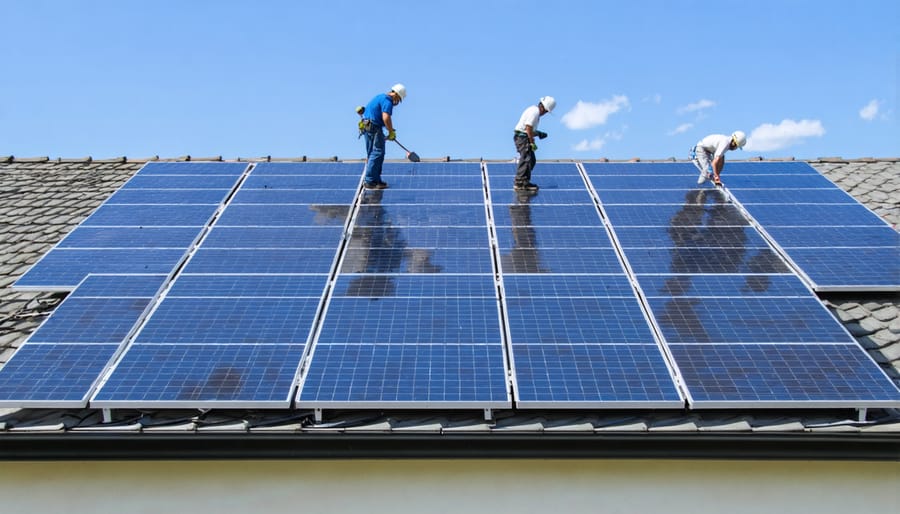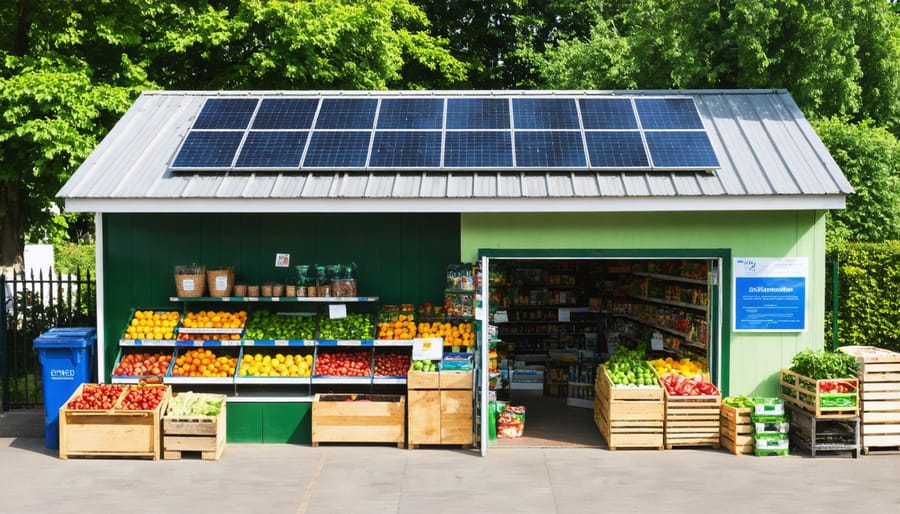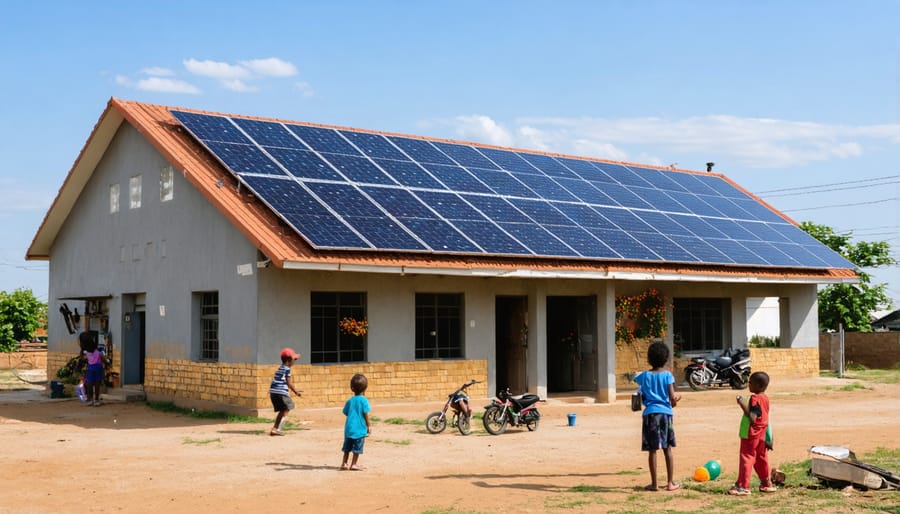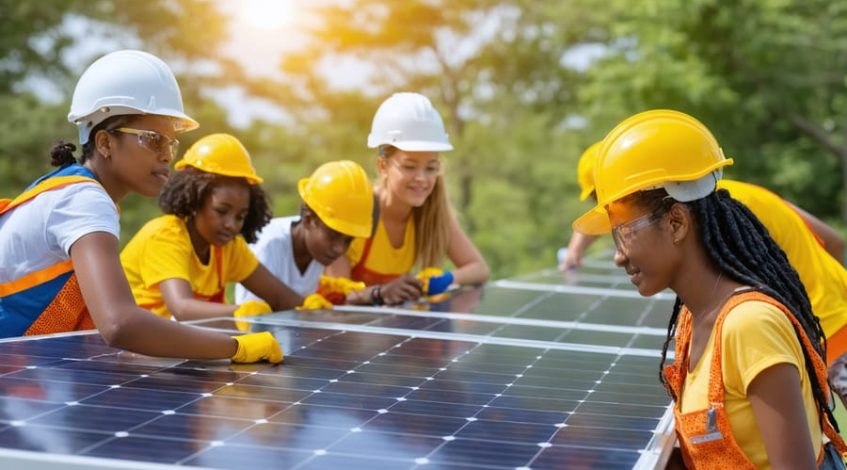Microloans serve as powerful catalysts for transformative small-scale projects, particularly in developing economies and underserved communities. These strategic financial instruments, typically ranging from $500 to $50,000, unlock opportunities across various sectors that traditional lending often overlooks. From empowering local entrepreneurs to launch sustainable businesses to funding essential agricultural equipment upgrades, microloans create immediate impact while fostering long-term economic resilience. Their flexible nature makes them ideal for funding community-driven initiatives, small-scale manufacturing operations, technology upgrades for existing businesses, and sustainable energy projects. Understanding which projects align best with microloan financing helps organizations maximize their social and economic impact while ensuring successful loan repayment. This guide explores the most suitable projects for microloan funding, considering factors such as implementation timeline, revenue generation potential, and community benefit to help stakeholders make informed decisions about their investments.
Residential Solar Panel Installations
Single-Family Home Solutions
Microloans provide an accessible financing solution for homeowners looking to implement solar energy systems in single-family residences. These loans typically range from $5,000 to $25,000, making them ideal for installations that power individual households. The funding can cover essential components including solar panels, inverters, mounting hardware, and professional installation costs.
A standard 5-7kW residential solar system installation, which adequately powers most single-family homes, aligns perfectly with microloan parameters. These loans can also support supplementary elements such as battery storage systems, smart meters, and monitoring equipment that optimize system performance and energy consumption.
Homeowners can leverage microloans for energy-efficient upgrades that complement their solar installation, including improved insulation, smart thermostats, and LED lighting systems. This comprehensive approach maximizes the return on investment and reduces overall energy costs. The flexible repayment terms, typically ranging from 3 to 7 years, allow families to match their loan payments with projected energy savings, creating a financially sustainable transition to solar power.
Most microlenders offer streamlined application processes and faster approval times compared to traditional financing options, enabling homeowners to initiate their solar projects quickly and efficiently.

Community Solar Initiatives
Microloans play a crucial role in enabling community solar initiatives, making clean energy accessible to residential areas through shared investment and collective benefits. These financial instruments support the installation of solar arrays that serve multiple households, particularly benefiting those who cannot install individual systems due to structural limitations or financial constraints.
Through microloan programs, communities can establish solar cooperatives where residents collectively invest in and manage shared solar installations. These projects typically involve installing solar panels on community buildings, shared spaces, or dedicated solar gardens, with the generated power being distributed among participating households.
The financial structure often incorporates innovative models like peer-to-peer energy trading, allowing participants to maximize their investment returns. Microloans can cover initial installation costs, maintenance expenses, and necessary infrastructure upgrades, with repayment terms structured around the project’s energy savings.
Success stories include neighborhood solar initiatives where microloans have enabled communities to reduce energy costs by 30-40% while creating local jobs and fostering sustainable development. These projects demonstrate how small-scale financing can drive significant community-wide environmental and economic benefits.
Small Business Solar Integration
Retail and Office Installations
Retail and office installations represent prime opportunities for microloan-funded solar projects, offering businesses significant energy savings while helping them maximize business solar profits. These installations typically include rooftop solar panels, LED lighting upgrades, and smart energy management systems tailored to commercial spaces.
For retail establishments, microloans can support the installation of solar panels ranging from 10kW to 50kW systems, depending on available roof space and energy requirements. These systems can offset high daytime electricity consumption when stores experience peak operation hours. Additional components might include solar-powered signage and energy-efficient display lighting, which contribute to both sustainability goals and reduced operational costs.
Office buildings benefit from similar installations, with particular emphasis on smart monitoring systems that regulate energy usage during business hours. Typical microloan-funded projects include energy-efficient HVAC upgrades, motion-sensor lighting, and window treatments that reduce solar heat gain. These improvements not only lower utility bills but also enhance workplace comfort and productivity.
Many successful retail and office installations have achieved ROI within 3-5 years through reduced energy costs and available tax incentives. The modular nature of these systems allows businesses to start with essential components and expand as needed, making microloan financing particularly practical for phased implementation approaches.

Agricultural Applications
Microloans can effectively support various agricultural projects, particularly those incorporating solar energy solutions for small-scale farming operations. These loans enable farmers to implement solar-powered irrigation systems, which significantly reduce operational costs while maintaining consistent crop yields. A typical microloan can cover the installation of solar water pumps, essential for reliable water access in remote agricultural areas.
Small-scale greenhouse operations benefit considerably from microloan-funded solar installations. These systems can power climate control equipment, automated watering systems, and essential monitoring devices. Farmers can optimize growing conditions while reducing their dependency on grid electricity, resulting in lower monthly operating expenses.
Post-harvest processing facilities also present excellent opportunities for microloan-supported solar projects. Solar-powered cold storage units help preserve agricultural products, extending their shelf life and market value. Additionally, grain drying facilities equipped with solar thermal systems can operate more efficiently, reducing energy costs during crucial processing periods.
For livestock operations, solar-powered ventilation and lighting systems funded through microloans create healthier environments for animals while decreasing utility expenses. These installations often pay for themselves within a few years through reduced energy costs and improved productivity.
The flexibility of microloans makes them particularly suitable for modular solar implementations, allowing farmers to start with essential systems and expand as their operations grow and generate returns.
Non-Profit and Community Projects

Educational Institutions
Microloans can significantly impact educational institutions by funding solar energy installations that reduce operational costs while promoting environmental sustainability. Schools and community centers can leverage these loans to implement solar panels on rooftops or unused ground space, creating both educational opportunities and long-term cost savings.
A typical microloan-funded solar project for an educational institution might include installation of 10-20kW systems, capable of offsetting 30-40% of the facility’s energy consumption. These installations often pay for themselves within 5-7 years through reduced utility bills, making them financially viable even for budget-conscious institutions.
Beyond energy generation, these projects serve as valuable teaching tools. Students can monitor real-time energy production, learn about renewable energy technologies, and understand environmental impact through hands-on experience. Community centers benefit similarly, often using the installations to demonstrate sustainable practices to local residents.
Success stories include rural schools that have reduced their monthly energy expenses by up to 60% and community centers that now operate as net-zero facilities. These projects typically require minimal maintenance while providing reliable power for 25+ years, making them excellent candidates for microloan funding.
Religious Organizations
Religious organizations can significantly benefit from microloans to implement solar energy solutions in their places of worship. These projects typically involve installing solar panels on church rooftops, temple grounds, or mosque facilities to reduce energy costs and promote environmental stewardship. A microloan can cover the initial installation costs of solar panels, inverters, and necessary electrical equipment.
Many religious facilities are ideal candidates for solar installations due to their large roof areas and substantial daytime energy consumption patterns. The implementation often includes LED lighting upgrades, solar water heating systems, and energy management controls, all of which can be funded through microloans.
Success stories include houses of worship that have reduced their utility bills by 60-80% after solar installation, allowing them to redirect funds toward community services and outreach programs. The typical payback period ranges from 5-7 years, making it a financially viable investment for religious institutions.
These projects also serve as powerful demonstrations of environmental responsibility, inspiring congregation members to consider sustainable energy solutions for their own homes and businesses. Religious organizations can often secure favorable microloan terms through faith-based lending networks and community development financial institutions.
Microgrid Development
Microloans play a crucial role in developing local microgrid projects, enabling communities to establish independent power systems that enhance energy resilience and sustainability. These financial instruments support the implementation of small-scale power distribution networks, complete with renewable energy sources, storage solutions, and smart control systems.
Typical microgrid development projects eligible for microloans include the installation of solar panels, battery storage systems, and advanced monitoring equipment. These loans can cover initial engineering assessments, equipment procurement, and installation costs for systems serving neighborhoods, business districts, or remote communities.
The financial support extends to critical components such as power conditioning units, distribution infrastructure, and smart meters. Communities can implement blockchain-enabled solar trading systems, allowing participants to efficiently manage and exchange excess energy within the microgrid network.
Successful microgrid projects typically start with comprehensive feasibility studies and detailed implementation plans. Microloans can fund these essential preliminary steps, ensuring proper system sizing and integration with existing infrastructure. The funding may also support training programs for local technicians and system operators, creating sustainable employment opportunities while ensuring long-term system maintenance and reliability.
These projects particularly benefit rural areas and developing regions where traditional grid connections are unreliable or cost-prohibitive. By financing microgrid development, microloans contribute to energy independence, economic growth, and community resilience.
Microloans have proven to be a transformative force in expanding solar energy adoption across diverse sectors. By providing accessible financing options, these loans enable residential homeowners, small businesses, and community organizations to implement sustainable energy solutions that might otherwise be out of reach. The success of microloan-funded solar projects demonstrates their effectiveness in bridging the financial gap while delivering tangible environmental and economic benefits. Looking ahead, the continued growth of microloan programs, coupled with advancing solar technology and decreasing installation costs, promises to accelerate clean energy adoption. As more success stories emerge and lending models evolve, microloans will remain a crucial tool in democratizing access to solar energy and supporting the global transition to renewable power sources.

